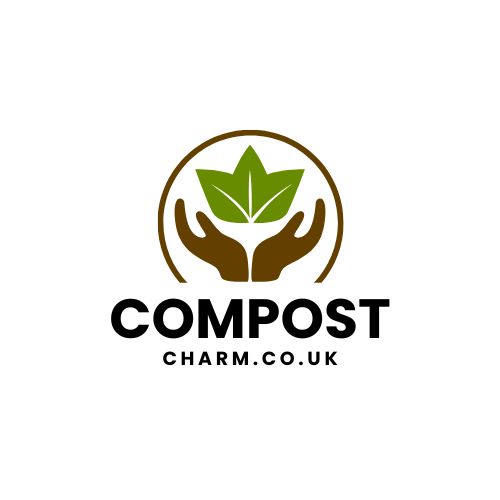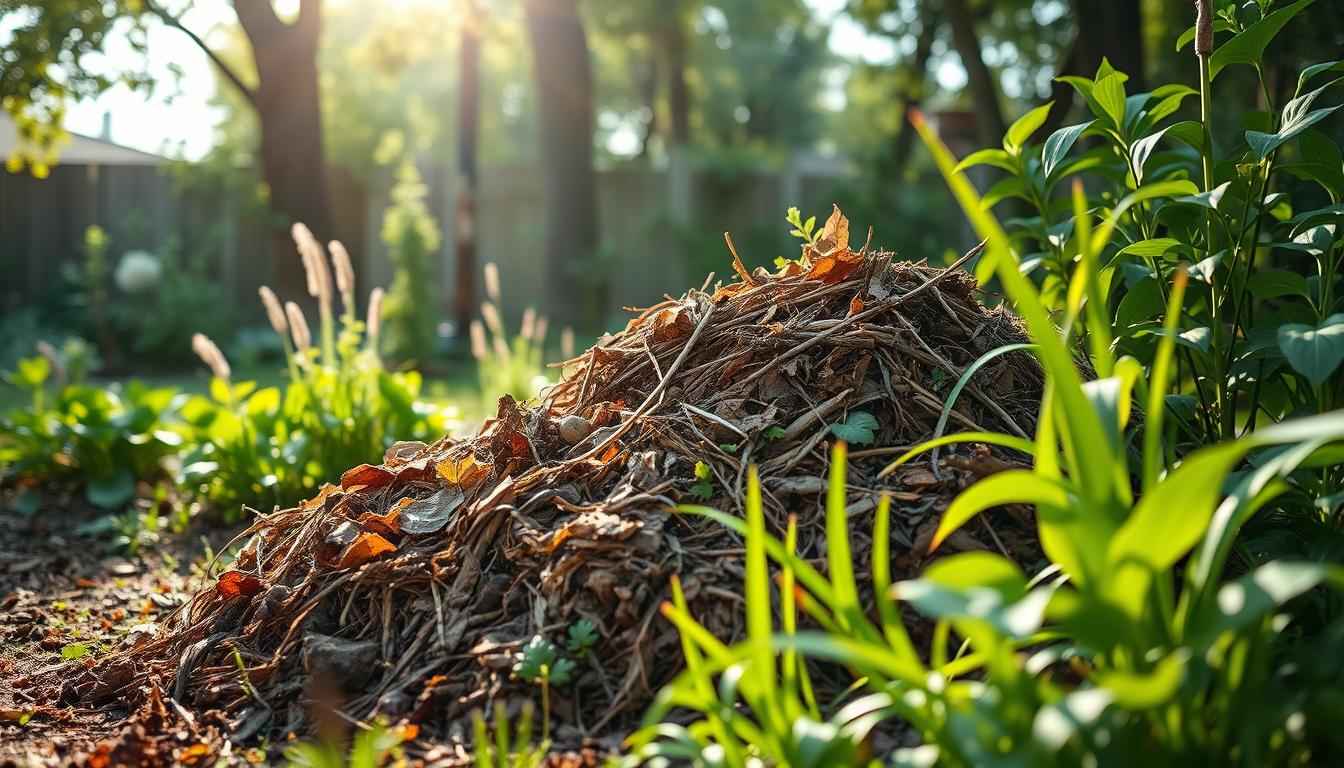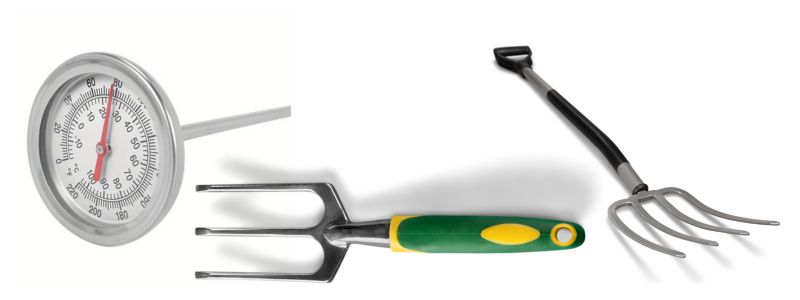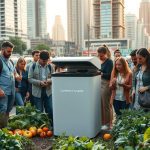If you want to know the answer to What Is Hot Composting and How Does It Reduce Greenhouse Gases? Then check out our article here to learn a heck of a lot more!
I’ve found that composting is a simple yet effective way to manage waste. It helps us contribute to a more sustainable environment.
By breaking down organic waste, we create a nutrient-rich soil amendment.
Hot composting is a climate-friendly technique. It not only reduces waste but also minimizes greenhouse gas emissions.
This eco-friendly practice is becoming more popular as people and communities seek ways to fight climate change.
Key Takeaways
- Hot composting is an effective method for managing organic waste.
- It reduces greenhouse gas emissions, contributing to a more sustainable environment.
- Climate-friendly composting techniques are essential for mitigating climate change.
- Composting turns waste into a valuable, nutrient-rich soil amendment.
- Embracing hot composting can significantly reduce our environmental footprint.
The Science of Hot Composting
Hot composting works through an aerobic decomposition process. This eco-friendly method uses high temperatures from microbial activity.
These temperatures come from breaking down organic materials.
What Makes Composting “Hot”
Composting gets hot because of the intense microbial activity. This happens when microorganisms eat organic waste.
The right mix of green and brown materials, enough moisture, and oxygen are key.
The aerobic decomposition process is vital. It lets microorganisms thrive and break down organic matter well. As they work, they release heat, warming up the compost pile.
The Microbial Activity Behind the Heat
Microorganisms like bacteria and fungi drive decomposition. They turn complex organic molecules into simpler ones.
This process releases carbon dioxide, water, and heat.
The heat comes from the metabolic work of these microorganisms. They use enzymes to break down organic matter.
This activity produces heat.
| Microorganism Type | Role in Decomposition | Optimal Conditions |
|---|---|---|
| Bacteria | Break down organic matter into simpler compounds | Adequate moisture, oxygen, and nutrients |
| Fungi | Decompose complex organic molecules | Presence of organic matter, adequate moisture |
The table shows how different microorganisms have unique roles in decomposition.
Meeting their optimal conditions is crucial for effective hot composting.
What Is Hot Composting and How Does It Reduce Greenhouse Gases?
Hot composting is more than just reducing waste. It’s a key way to cut down on greenhouse gases.
By learning how hot composting works, we can see its big role in fighting climate change.
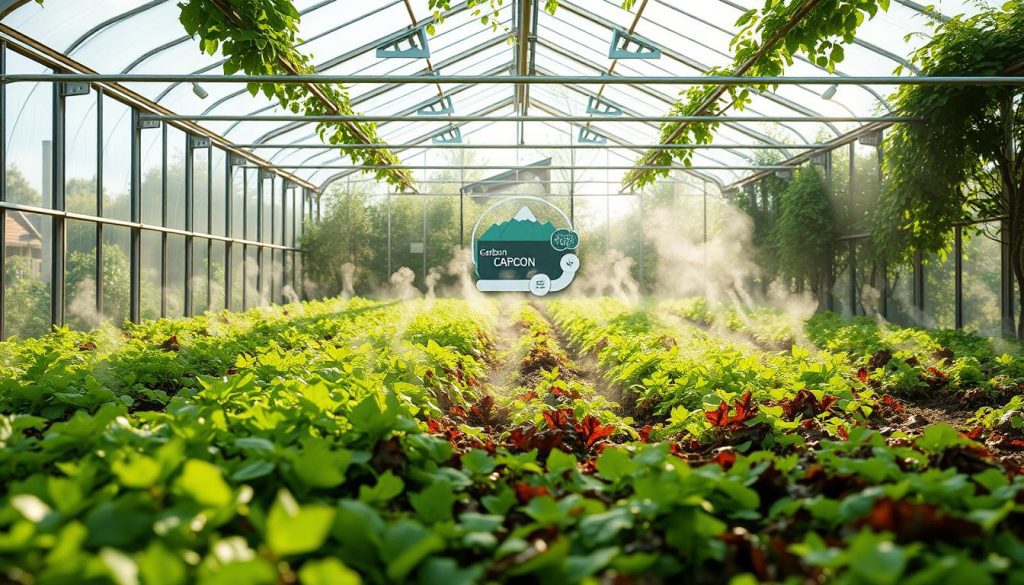
The Carbon Cycle in Composting
Hot composting is closely linked to the carbon cycle. It breaks down organic stuff with the help of tiny bugs, which makes CO2.
But, this CO2 is balanced by the carbon plants absorb when they grow.
This natural balance is key to reducing our carbon footprint through composting.
Methane Prevention Through Proper Composting
Hot composting is great because it stops methane production. Methane is a strong greenhouse gas. It’s made when waste breaks down without air, like in landfills.
But hot composting breaks down waste with air, so no methane is made. This greenhouse gas reduction method is vital for fighting climate change.
Nitrous Oxide Reduction
Good composting also cuts down on nitrous oxide (N2O) emissions. N2O is another harmful greenhouse gas.
By keeping the compost pile just right, like the right mix of carbon and nitrogen, and enough air, N2O production goes down.
This makes hot composting even more effective as a greenhouse gas reduction method.
In short, hot composting is a big help in lowering greenhouse gas emissions.
By knowing and using the right composting methods, we can all help fight climate change and cut down on waste.
Environmental Benefits Beyond Greenhouse Gas Reduction
Composting does more than fight climate change. It’s a key to a healthier environment.
By composting, we help create a better future in many ways.
Soil Health Improvement
Composting boosts soil health by adding organic matter. It makes soil better at holding water and fights erosion.
It’s like making a special soil food that helps plants grow strong.
Landfill Waste Reduction
Composting cuts down on waste going to landfills. It stops food scraps and yard waste from making methane.
This is a big step towards managing waste better.
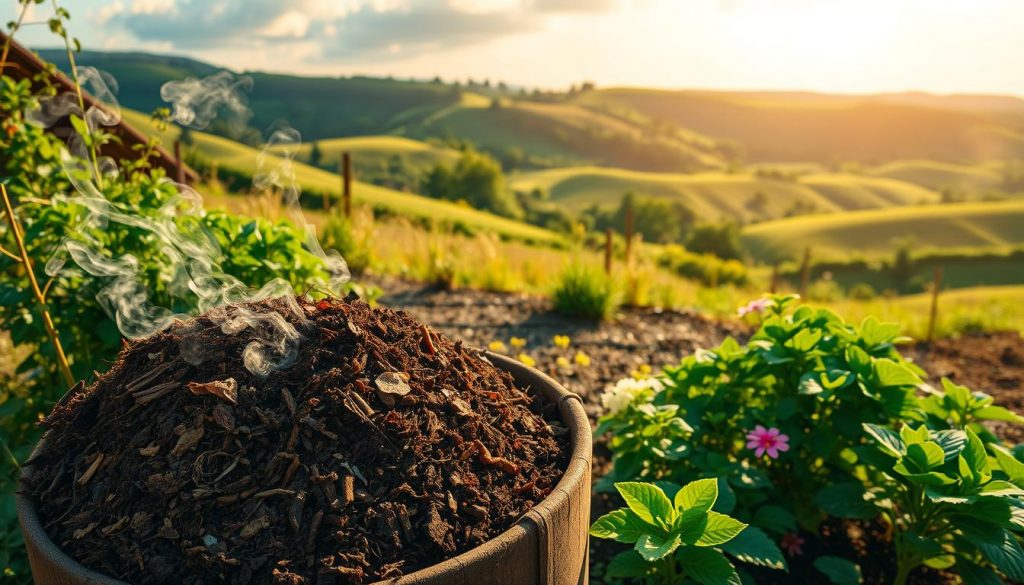
Water Conservation Benefits
Compost helps soil keep water longer. This means we don’t have to water as often.
It’s great for places with little rain or sandy soil that dries out fast.
| Environmental Benefit | Description | Impact |
|---|---|---|
| Soil Health Improvement | Increases organic matter, improves soil structure, and supports microbial life. | More fertile soil, better water retention, and reduced erosion. |
| Landfill Waste Reduction | Diverts organic waste from landfills. | Less methane production and reduced greenhouse gas emissions. |
| Water Conservation | Improves soil’s water-holding capacity. | Reduced need for watering and minimized soil erosion. |
Essential Materials for Successful Hot Composting
To start hot composting, you’ll need a few key materials. These will help create a thriving compost ecosystem.
The right tools and materials are crucial for a nutrient-rich compost that benefits your garden.
Choosing the Right Compost Bin or System
Choosing the right compost bin is key for hot composting. You have many options, like outdoor compost bins, compost tumblers, and worm composters.
Think about the space you have, how much waste you’ll compost, and what you like.
| Compost Bin Type | Description | Benefits |
|---|---|---|
| Outdoor Compost Bins | Traditional bins for outdoor composting | Easy to set up, can handle large quantities |
| Compost Tumblers | Rotating bins for easy turning | Simplifies the turning process, aerates compost |
| Worm Composters | Specialized bins for vermicomposting | Produces high-quality compost, ideal for indoor composting |
Green and Brown Materials: Finding the Perfect Balance
A mix of green materials (high in nitrogen) and brown materials (high in carbon) is key. Green materials are kitchen scraps, grass clippings, and manure.
Brown materials are dried leaves, straw, and shredded newspaper.
Aim for 2/3 brown materials and 1/3 green materials for best decomposition.
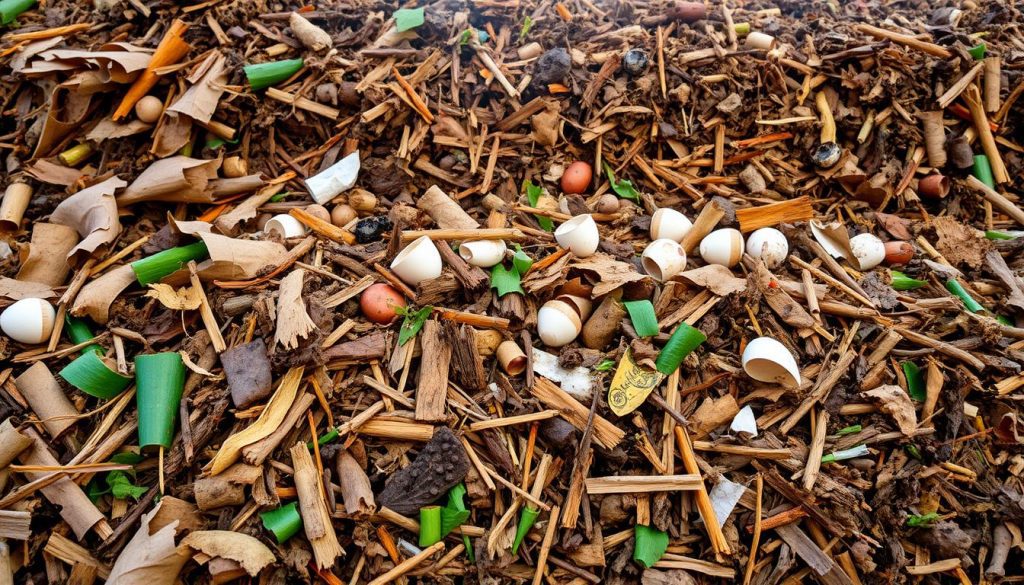
Tools That Make Composting Easier
Having the right tools makes composting easier. You’ll need a compost thermometer to check temperature, a pitchfork for turning, and a compost aerator for better airflow.
These tools help keep conditions right for decomposition and make the process smoother.
Setting Up Your Hot Compost Pile: Step-by-Step
Creating a hot compost pile is key to turning waste into something useful.
It cuts down on household waste and helps reduce harmful emissions.
Selecting the Ideal Location
First, pick a spot for your compost pile. It should be well-ventilated, easy to get to, and not in direct sunlight.
This keeps the pile moist. Also, choose a place near water to help keep the pile wet enough.
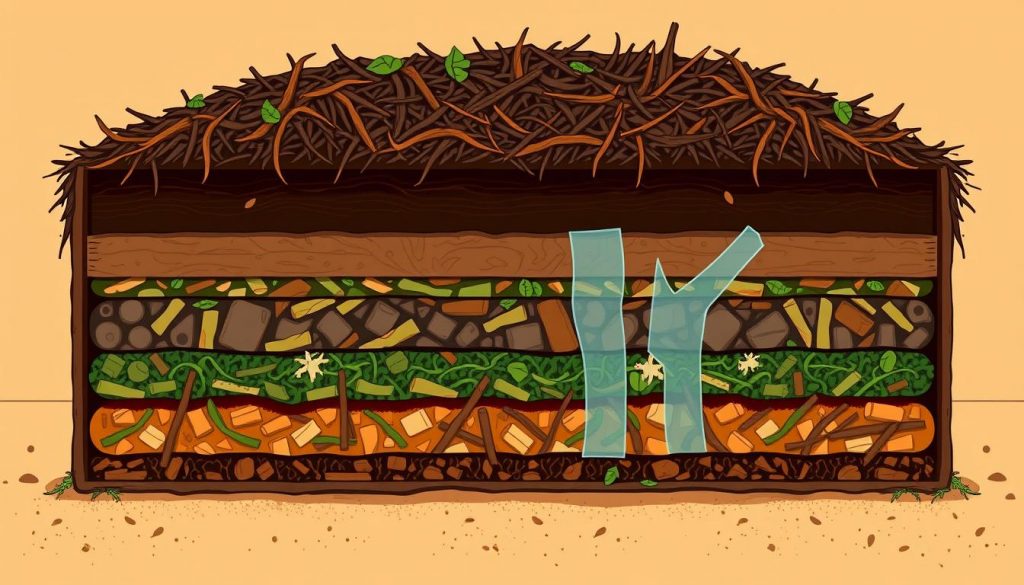
Building Your First Layer
The first layer of your compost pile is important. Start with 4-6 inches of coarse materials like twigs or straw.
This layer helps with airflow, which is vital for decomposition. Good airflow keeps the microorganisms healthy.
Adding Materials in the Correct Ratio
Next, add your compost materials. Mix “green” materials (like kitchen scraps) with “brown” materials (like dried leaves). Aim for 2/3 “brown” and 1/3 “green”.
This balance helps the microorganisms and keeps the compost hot.
| Material Type | Examples | Carbon/Nitrogen Content |
|---|---|---|
| Green Materials | Kitchen scraps, grass clippings | High in Nitrogen |
| Brown Materials | Dried leaves, straw | High in Carbon |
Things to avoid putting in your compost!
Activating Your Compost Pile
After layering, activate your compost pile. Make sure it’s moist and turn the materials to add oxygen. You can also use a compost starter.
This helps the microbes work well.
By following these steps, you’ll have a thriving hot compost pile. It will reduce waste and help the environment.
Maintaining the Heat: Critical Care Techniques
To keep the heat in a compost pile, it’s key to check the temperature often.
The best temperature for hot composting is between 130°F and 140°F (54°C to 60°C).
Monitoring Temperature: When and How
It’s important to watch the compost pile’s temperature closely.
Check it daily to keep it in the right range.
Turning Strategies for Maximum Decomposition
Turning the compost pile is crucial for oxygen flow and faster breakdown.
Turn it every few days to make sure everything decomposes well.
Moisture Management Throughout the Process
Keeping the right moisture level is vital for a healthy compost pile. Make sure it’s not too dry or too wet, as both can harm the process.
Troubleshooting Common Hot Composting Problems
Hot composting is rewarding but comes with challenges. To cut down greenhouse gases, knowing how to fix common problems is key.
When Your Pile Won’t Heat Up
A compost pile that won’t heat up is frustrating. This usually happens if the carbon-to-nitrogen ratio is off or if it’s too dry. The right mix of “green” and “brown” materials and enough moisture can fix this.
Tom Herlihy, a composting expert, said, “A well-balanced compost pile is like a well-oiled machine; it gets the job done efficiently.”
“Composting is a natural process that turns waste into a valuable resource, reducing the need for synthetic fertilizers and supporting sustainable agriculture.”
Dealing with Odors and Pests
Odors and pests can be a problem in hot composting. To solve this, keep the right balance of materials, ensure good airflow, and watch moisture levels.
Adding a layer of finished compost or soil can also help with odors.
Addressing Slow Decomposition
Slow decomposition can be due to poor aeration, too much moisture, or an unbalanced carbon-to-nitrogen ratio.
Regularly turning the compost and using the right mix can speed up decomposition.
By tackling these common issues, you can keep your hot composting going well.
This helps reduce greenhouse gases and makes a valuable resource for your garden.
Harvesting and Using Your Finished Compost
Composting for sustainability hits its peak when you harvest your finished compost. This valuable resource is the result of careful planning, maintenance, and patience.
Now, it’s time to enjoy the fruits of your labor.
How to Know When Your Compost Is Ready
Finished compost is dark, crumbly, and smells earthy. It should have no recognizable pieces of the original materials.
If it looks and smells like this, it’s ready to use.
Screening and Storing Your Black Gold
To use your compost well, you’ll need to screen it. This removes lumps or unfinished bits. Use a compost sifter or wire mesh for a uniform texture.
Store it in a dry, covered area to keep its quality.
Best Ways to Apply Compost in Your Garden
There are several ways to use compost in your garden:
- Mix it into soil before planting to improve soil structure and fertility.
- Use it as a mulch to retain moisture and suppress weeds.
- Add it to your potting mix for container gardens.
- Make a compost tea by steeping compost in water, which can be used as a foliar spray or soil drench.
By using these methods, you’ll make your garden healthier and more productive.
This contributes to a more sustainable gardening practice.
From Backyard to Global Impact: Your Composting Footprint
Hot composting can greatly cut down your carbon footprint. It also encourages others to be more sustainable.
Together, we can make a big difference in reducing greenhouse gases.
Calculating Your Personal Greenhouse Gas Reduction
To see how composting helps, you need to figure out your personal impact. Look at how much waste you compost and how it lowers methane and nitrous oxide.
For example, composting food waste stops methane from landfills.
Greenhouse Gas Reduction through Composting:
| Waste Type | Emissions Reduction | Composting Impact |
|---|---|---|
| Food Waste | Reduced Methane | Significant |
| Yard Trimmings | Reduced Nitrous Oxide | Moderate |
| Paper Products | Carbon Sequestration | High |
Community Composting Initiatives
Community composting makes a bigger difference by combining efforts. It cuts down landfill waste and teaches people about green living.
Joining or starting a community composting project helps the environment.
Inspiring Others to Join the Movement
Composting’s strength comes from working together. By sharing what we know, we motivate others to compost.
This can lead to big changes, making composting key to fighting climate change.
Conclusion: Your Composting Journey Makes a Difference
Hot composting is a simple yet powerful way to help our planet. It reduces greenhouse gas emissions and makes our environment healthier.
By using organic waste management, we can all play a part in saving our Earth.
Keep going on your composting path. Watch your progress and tweak your methods as you learn.
Every small step in composting brings us closer to a greener future.
Together, we can make a big difference and leave a better world for future generations.
